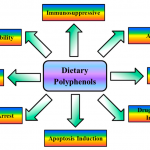Carbohydrate Source Matters . . . Are You Making the Right Choice?
Do you think carbohydrate source is important? It’s pretty common to hear from time to time from patients that if I get my carbohydrates from grains, or if I get my carbohydrates from fruit, or if I get my carbohydrates from say starchy vegetables it doesn’t really matter as long as I get an equivalent amount of carbohydrates. That’s not technically accurate, and what I want to share with you is the reason why.
I picked two examples, pasta and butternut squash, as the carbohydrate sources to compare. Pasta we know can be made from several things, but for this example I’m going to utilize wheat as the source of where it is coming from. The other carbohydrate source example is butternut squash. Let’s just for simplicity sake make the argument that this is 40 grams of pasta versus 40 grams of starchy vegetable and in this case butternut squash. I want to point out a couple of the differences here and why it’s not just about the amount of carbohydrates that you’re consuming. Butternut squash is going to have a much broader nutrient profile to it which means you’re going to get a broader array of vitamins and minerals that are going to be more consistent with supporting your overall health. Pasta or wheat can’t make that argument. You are going to be limited in what you are going to be getting from it. Yes, you will get some B vitamins, a few minerals, but you also get a couple of what are known as anti-nutrients in there as well that are not going to be found in butternut squash in this example.
Vegetable vs. Grain Carbohydrate Source
Fiber
Now to be fair if we make the argument for whole grain pasta or wheat in its lesser refined form does it have fiber? Yes, it does have fiber. However, the amount of fiber that it has per the amount of total carbohydrates is not that high. It’s actually fairly insignificant. If we look at the fiber source for butternut squash it actually makes up a pretty large contribution. If you’ve ever eaten butternut squash, for example you bake a butternut squash, when you cut it in half and look at it and start to pull it apart with a fork you can actually see the fibery components of that. It’s very dense in fiber and there are many benefits, one of which is that it supports good gastrointestinal health.
Potassium
Potassium is something that we routinely need to find in our diet, and choosing the right carbohydrate source will ensure some is included. It is something that helps keep our body alkaline and it’s not something that we’re going to find in the grain category, and again pasta in this example. But, potassium because of its alkalizing nature it’s one of the things that helps form optimal neurological function. We tend to lose potassium easily so we have to continually consume foods that are going to replete potassium. Even from the standpoint of something like blood pressure, potassium is extremely crucial in helping maintain the volume of water in our blood.
Non-GMO
Next let’s discuss Non-GMO. Butternut squash is not genetically modified. Now whether you’re a GMO fan or on the fence about it, the bottom line with genetically modified organisms right now is that we just don’t know. There are a lot of ifs, ands and buts about it that we just are not sure about. Many of these foods that are genetically modified, apart from the genetic modification issue and how that is going to interact with our own genome and how we’re consuming foods, that may not be ideal for us to consume because we have not consumed them throughout our history, the other issue that comes into this and that actually links us in to the next point here is toxicity risk.
Toxicity
When you look at genetically modified foods a lot of the reasons that these foods are modified have to do with the fact that they can have toxins applied to them. You don’t see that with butternut squash or with other starchy vegetables. You don’t want this inherent risk of potentially consuming your food that doesn’t match up to your own genetics, and also considering a food having a very high toxicity risk associated with that. Those risks do increase with your grains or with pasta or something of that nature.
Allergen
Again, you may or may not be in the camp of gluten is a problem. Basically what I’m going to leave you with on this is if you read the medical literature the medical literature is pretty emphatic that gluten is a problem, and it’s not just someone who has celiac disease. We’re also talking about individuals who have what is known as gluten sensitivity. Now again you’re looking at the consistent consumption of a protein that is part of the standard American diet. It’s routinely consumed and the more it is consumed in food the more problematic that food becomes. Butternut squash doesn’t really have risk because it doesn’t have that big allergen in protein in it so it does not have the allergen risk associated with it. There are also some issues that come into play with the irritation and inflammation that comes along with consuming pasta, wheat, gluten that that’s going to create an inflammatory response, and you just don’t get that inflammatory response and accompanying allergen risk from butternut squash or other starchy vegetables.
Rich in Color
That moves us into the next point which is these starchy vegetables are going to be very rich in color. Just think about this as an example, let’s say you have some pasta in one hand and a butternut squash in the other hand, pasta is very dull. It’s either going to be white or brown whereas a butternut squash is going to be very rich and vibrant in color. It’s going to be very orange. Think about the sweet potato having that deep orange color, or maybe even beets, another starchy vegetable, having a very deep red color. The red color that we think about, those are polyphenols, but we also think about those antioxidants. They keep inflammation under control.
Supports Probiotics
Another added benefit that we get from these is that the bacteria in our gut which we all like to talk about now with these probiotics, they like polyphenols. They like antioxidants. They love that color. That color supports their growth. If we’re trying to modify the bacterial environment in our gut consuming foods that are rich in color is very favorable to those organisms. It’s much more complicated than this, but in very simplistic terms if we’re trying to promote the growth of the beneficial organisms and inhibit the growth of some of the non-beneficial organisms that really comes back down to the color component. You completely miss that benefit from consuming pasta and wheat and grains and this whole category of carbohydrates. The same thing can be said going back to the fiber component because fiber additionally is going to enhance the growth of those bacteria as well. It’s going to give them a nice environment in your gastrointestinal tract that helps them flourish and do all the beneficial things that they can do for us.
Plant Estrogens
Now when we think about plant estrogens a lot of times plant estrogens are thought about as it relates to soy, for example. I’m not advocating soy here by any means, but what I am suggesting is that whether it’s butternut squash, beets, turnips, rutabaga, or okra, all of these different types of food with all of this color in them also have a wide variety of plant estrogens in them. The beneficial thing about this is that these are estrogen-like compounds that are not over stimulatory. They stimulate just enough to get the positive benefit from estrogen, but they don’t over stimulate.
So, does the carbohydrate source really matter? I think we can easily answer the question and say yes, it absolutely matters where you get your carbohydrates from. It’s not about 40 grams of carbohydrates versus 40 grams of carbohydrates. It’s much different than that. We have to stop thinking in such a narrow viewpoint of our food and look at what food has to offer beyond just simply calories. It’s not calories in and calories out. This is why two people that can consume 40 grams of pasta versus 40 grams of butternut squash will receive different end results. An individual that makes this a mainstay of their diet is going to be a much healthier individual.





Leave a Reply